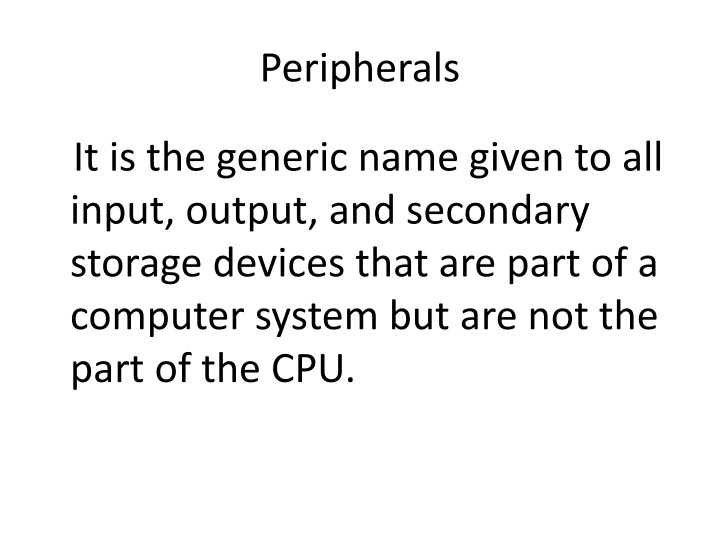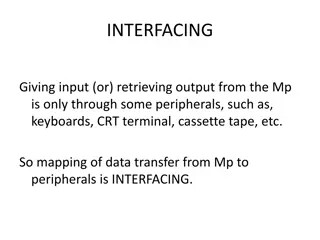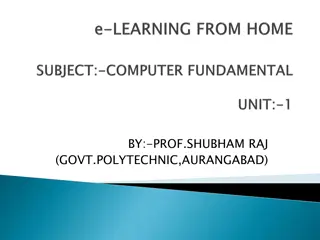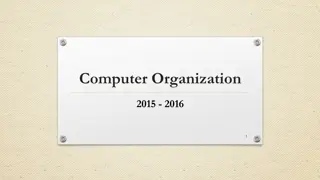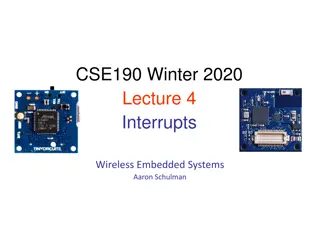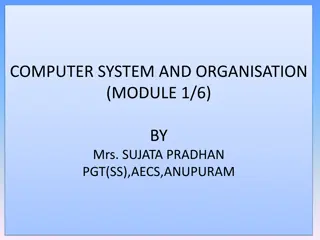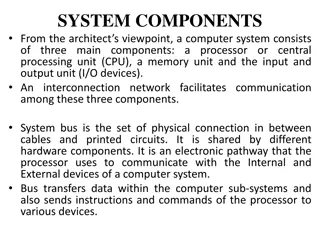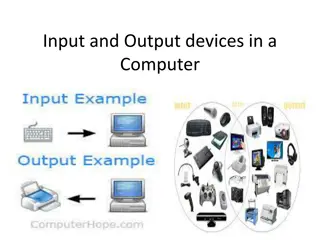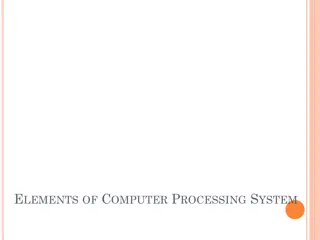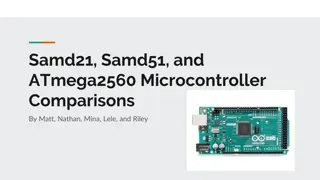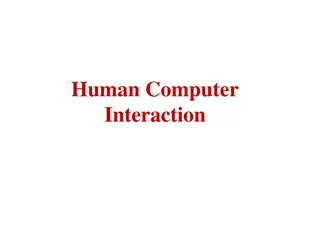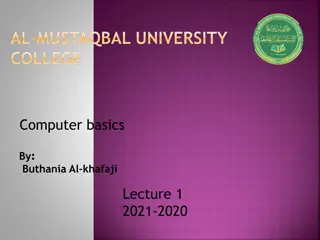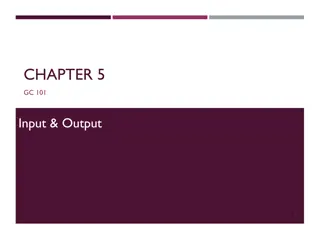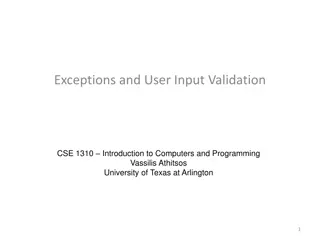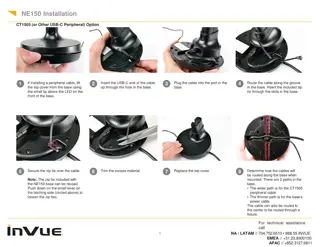Overview of Computer Peripherals and Input Technology
Computer peripherals encompass various input and output devices integral to a computer system beyond the CPU. This includes pointing devices like mice, styluses, trackballs, touchpads, touchscreens, light pens, and speech recognition systems. These technologies enhance user interaction, offering more intuitive ways to control and communicate with computers.
Download Presentation

Please find below an Image/Link to download the presentation.
The content on the website is provided AS IS for your information and personal use only. It may not be sold, licensed, or shared on other websites without obtaining consent from the author.If you encounter any issues during the download, it is possible that the publisher has removed the file from their server.
You are allowed to download the files provided on this website for personal or commercial use, subject to the condition that they are used lawfully. All files are the property of their respective owners.
The content on the website is provided AS IS for your information and personal use only. It may not be sold, licensed, or shared on other websites without obtaining consent from the author.
E N D
Presentation Transcript
Peripherals It is the generic name given to all input, output, and secondary storage devices that are part of a computer system but are not the part of the CPU.
Input tech. Pointing Devices An input device used to control a pointer on the screen is called a pointing device. A pointer is a small symbol that appears on the screen in a graphical user interface. Input tech. now provide a more natural user interface for computer users.
Types of Pointing Devices Mouse Stylus Trackball: This holds a large moving ball on the top. The body of the trackball is not moved. The ball is rolled with fingers. The position of the cursor on the screen is controlled by rotating the ball.
Touchpad A touchpad is a small, plane surface over which the user moves his finger. The user controls the movement of the cursor on the screen by moving his fingers on the touchpad. It is also known as a track- pad.
Touch screen The touch screen is a video display screen that receives input from the touch of a finger. The screen is covered with a plastic layer. There are undetectable beams of infrared light at the back of the screen. In order to enter data, the user touches icons or menus on the screen. Most touch screen computer use sensors to detect the touch of a finger.
Light Pen It is connected by a wire to the computer. It has a device at the tip that emits light. The pen sends information to the computer when a user touches the pen on certain areas of a specially designed screen. Usually used by engineers, graphics designers and illustrators.
Speech Recognition Systems It is the ability of a machine or program to identify words and phrases in spoken language and convert them to a machine-readable format. Speech recognition works using algorithms through acoustic and language modeling. Acoustic modeling represents the relationship between linguistic units of speech and audio signals; language modeling matches sounds with word sequences to help distinguish between words that sound similar.
Speech Recognition Systems Some of the newest speech recognition products are Amazon Alexa and Google Home. These devices are capable of voice recognition and interaction, play music, help in completing to-do lists, setting the alarm ON/OFF, playing audio books, providing weather, traffic, sports, and other real time information. These devices can also control other smart devices and helps in automating the home.
Optical Scanning Optical Scanning devices read text or graphics and convert them into digital input for the computer. These enables the direct entry of data from source document into a computer system. For e.g: 1. Desktop scanner is used to scan pages of text and graphics into the computer for desktop publishing and web publishing apps. Scanned document are stored in folders as part of document management library system for easy retrieval or reference.
Optical Scanning OCR: Optical character recognition scanners can read the characters and codes on merchandise tags, Product labels, Credit card receipts, Insurance premiums, Airline tickets, etc. In addition, OCR scanners are used to automatically sort mail, score tests, and process a wide variety of forms in business and govt.
Other Input tech. Magnetic stripe tech. is a form of data entry that helps computer read credit cards. The coating of the magnetic stripe on the back of such cards can hold about 200 bytes of information. Cust. a/c no. can be recorded on the magnetic stripe so that it can be read by bank ATMs, credit card authorization terminals and other magnetic stripe readers.
Other Input tech. Smart cards Digital cameras MICR: is a character recognition technology used mainly by the banking industry to streamline the processing and clearance of cheques and other documents. MICR encoding, called the MICR line, is at the bottom of cheques and other vouchers and typically includes the document-type indicator, bank code, bank account number cheque number, cheque amount (usually added after a cheque is presented for payment), and a control indicator.
MICR The format for the bank code and bank account number is country-specific. The technology allows MICR readers to scan and read the information directly into a data- collection device. Unlike barcode and similar technologies, MICR characters can be read easily by humans. MICR encoded documents can be processed much faster and more accurately than conventional OCR encoded documents.
